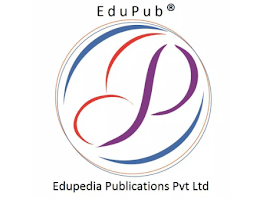The journey of research is both challenging and exhilarating, marked by the pursuit of knowledge and the quest to uncover new truths. For young researchers and newly enrolled PhD scholars, embarking on this journey can be an overwhelming experience, replete with complex methodologies, rigorous writing standards, and the daunting task of publication. This book, Basics of Research Methodology: Writing and Publication, is crafted with the intent of serving as a comprehensive guide and companion for those at the nascent stage of their academic careers. Research is a dynamic and evolving process, requiring a solid foundation in methodological principles and an ability to communicate findings effectively. This book aims to demystify the intricacies of research methodology, offering a structured approach to planning and executing research projects. From formulating research questions to selecting appropriate methods, we cover the essential steps required to build a robust research framework. The emphasis is on clarity and simplicity, ensuring that even complex concepts are accessible to readers without extensive prior experience. Writing is an integral part of the research process, serving as the medium through which discoveries are shared with the broader academic community. This book provides practical advice on developing a clear and concise academic writing style, tailored to meet the expectations of various scholarly audiences. Whether you are drafting your first research paper, preparing a thesis, or writing a dissertation, the principles outlined in these pages will equip you with the skills necessary to produce high-quality academic work. We delve into the nuances of writing different sections of a research paper, from the introduction to the conclusion, highlighting the purpose and structure of each component.

The publication process, while rewarding, can often seem like a labyrinth to those unfamiliar with its intricacies. This book offers a step-by-step guide to navigating the world of academic publishing, from selecting the right journal to understanding the peer review process. We provide tips on how to respond to reviewers’ comments, handle rejections, and ultimately succeed in getting your work published. The aim is to empower you with the knowledge and confidence needed to disseminate your research effectively, contributing to the advancement of your field and establishing your presence as a scholar. Throughout this book, we draw upon the experiences of seasoned researchers and successful academics, providing insights and practical examples that illustrate the real-world application of the concepts discussed. We recognize the diversity of research disciplines and strive to present information that is broadly applicable while acknowledging the unique requirements of different fields. Our goal is to create a resource that not only educates but also inspires, encouraging you to approach your research with curiosity, diligence, and a passion for discovery. As you embark on your research journey, we hope this book will serve as a valuable resource, guiding you through the challenges and helping you to achieve your academic and professional aspirations. Remember, research is a continuous learning process, and each step you take brings you closer to making a meaningful impact in your field. We wish you success and fulfillment in your endeavors, and look forward to the contributions you will make to the world of knowledge.
Book Details
Publisher: Edupedia Publications Pvt Ltd
ISBN: 9789392585937
Binding: Paperback (Perfect Binding)
Year: 2024
Genre: Reference (Research Methodology)
Pages: 346
Dimensions: 6.00"x9.00''

















.jpg)












.jpg)

